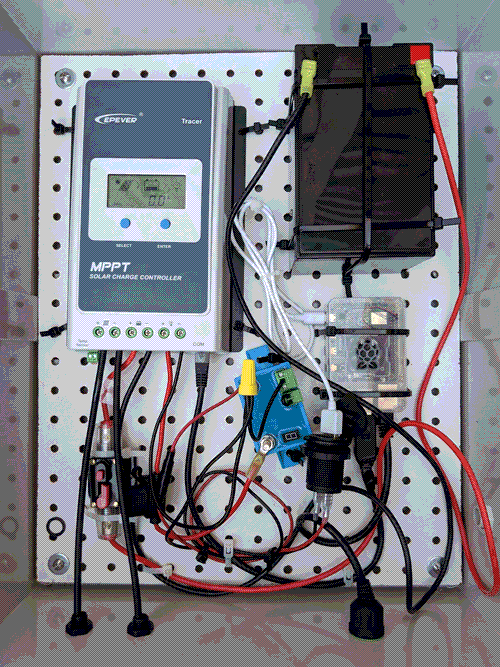GUIDE: Guides for Stewards
What do you need to install a small scale solar system?
A server takes care, maitenance and stewardship as well as specific physical conditions and network connectivity.
What sort of site do you need for a small scale solar system?
- To install a system you will need a safe and accessible outdoor area that is exposed to direct sunlight for at least 4 hours per day (this means a spot that is free from obstructions/shadows and ideally facing the equator)
- The solar panel needs to be safely secured to a wall, pole or rooftop so it doesn't blow away or get stolen
I have a site that could work, how should the solar panel be positioned?
The ideal module tilt for averaging PV production over the year is generally at the angle of latitude facing the equator. The ideal orientation for the PV module in the northern hemisphere is facing south. For example, NYC is at 41 degrees north so an optimal tilt will be at 41 degrees facing south. The ideal orientation in the southern hemisphere will be northern facing at latitude tilt. Above 23 degrees north the sun will always be to the south and below 23 degrees south the sun will always be to the north. In the tropics, between 23 degrees north and 23 degrees south, the sun will travel on both the north and south sides of the installation, so shading from both directions must be taken into consideration. Avoid obstructions that will shade the module particularly between 9am and 3pm.
Vertical mounting, i.e. 90 degree tilt, or flat mounting, i.e. 0 degree tilt, is acceptable if need be but may cause decreased efficiency depending on the latitude.
Of course it is still possible to install a module even if you don't have the ideal way of tilting and orientating it. Your system will just produce a bit less energy if the orientation is not ideal.
What sort of connectivity do you need to run a server?
- The server needs Internet access either via ethernet cable or wifi (minimum network speed: 25mb/s up & 25mb/s down)
- You need to be able to set up port forwarding for both http (port 80) and ssh (port 20) with your Internet Service Provider to serve the solar protocol network publically
